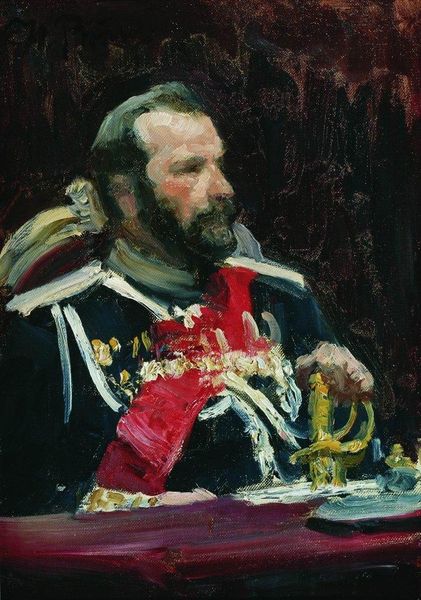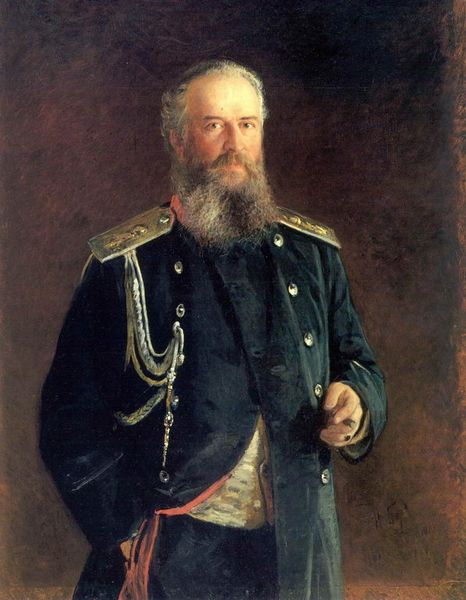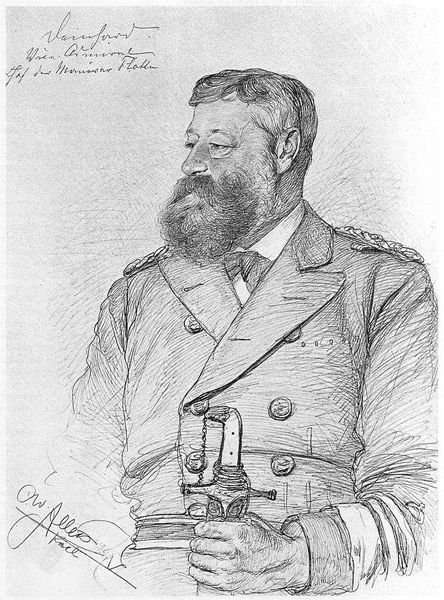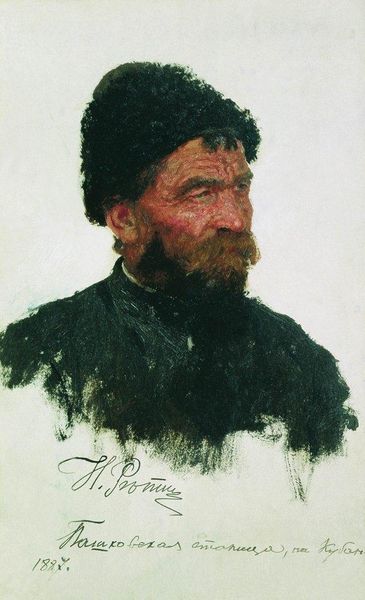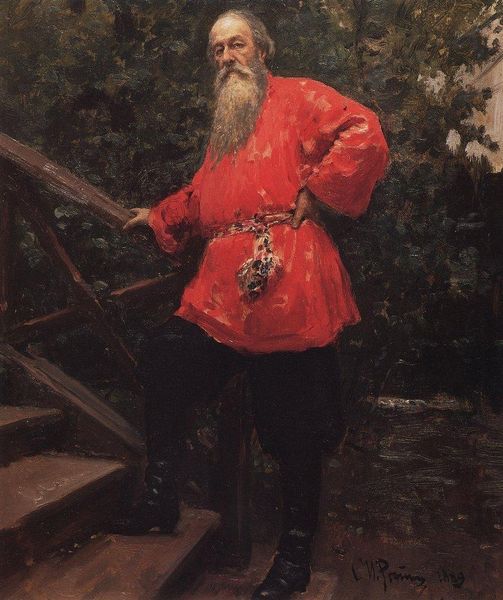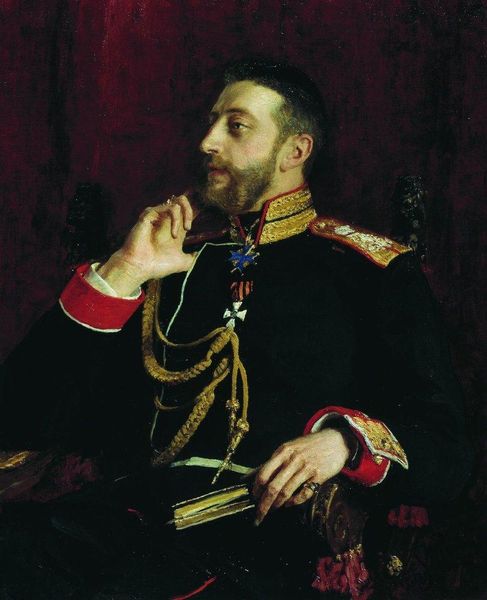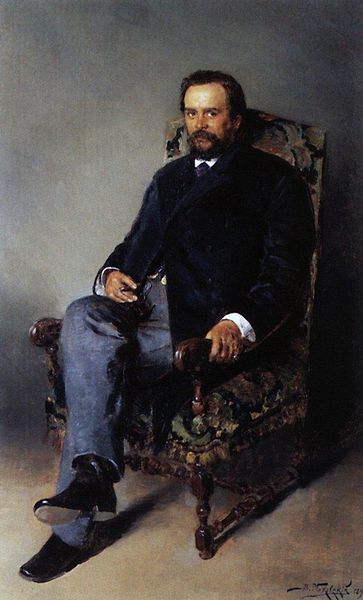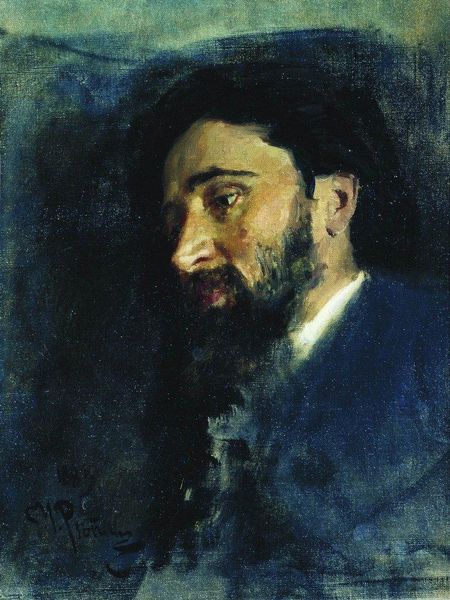
painting, oil-paint
#
portrait
#
painting
#
oil-paint
#
russian-avant-garde
#
academic-art
#
realism
Copyright: Public domain
Curator: Ilya Repin painted this portrait of I.R. Tarhanov in 1892 using oil paint. Editor: My initial thought? Contemplation. The pose, that heavy brow—he’s caught in some serious internal debate. It makes you wonder what preoccupied him so intensely. Curator: The gravity you perceive makes sense; consider that a portrait of someone in uniform typically signified authority. Yet here, it's tempered with a hint of melancholic introspection. Maybe it's not power being projected but rather the burden of it. The decorations speak of merit, but his gaze is fixed elsewhere. Editor: It is an incredible uniform—detailed, ornate. It contrasts with the looseness of the rendering around the face and hair; the contrast draws all my focus onto that expressive, worried expression. Do you feel like this almost casual painting of such a high-status object could also speak to inner thoughts and anxieties? It looks like the academic painting tradition he was a part of meeting a new expressive era. Curator: Precisely! The trappings of status are almost a facade—he’s wrestling with something beyond the purely external world. There's a visible dialogue here between public persona and private self. And Repin, through brushstrokes and that almost penetrating gaze, invites us right into the thick of it. The ring glinting on his finger also adds to the semiotic mix—a sign of personal commitment set against state responsibilities. Editor: So, if the ring and the uniform are these symbols, these visual keys, what does the somewhat smudged, obscured glass of water or spirits suggest sitting on the table next to him? Curator: Oh, the glass! Good eye. Given the intensity we've discussed, I wouldn't dismiss it as merely a compositional element. Perhaps it's a prompt for easing one's burdens, a momentary escape, or a symbol of vulnerability in the face of inner struggles. Or maybe simply just some casual drink by someone sitting for a painting... Repin keeps the balance fascinatingly ambiguous. Editor: It certainly invites that kind of speculation, doesn’t it? So, walking away, I find myself oddly drawn in. This isn't just a historical document but an open invitation to muse on what drives us, and what haunts us too. Curator: Agreed, a dance between surface and depth that continues to fascinate more than a century later. Not just an image of a man but a reflection of human complexities we can still relate to.
Comments
No comments
Be the first to comment and join the conversation on the ultimate creative platform.




